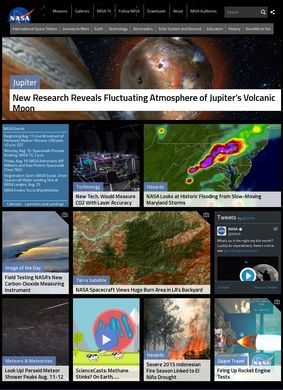NASA's newly redesigned website aims to provide its visitors with an enhanced web experience. The site offers users a variety of mediums to explore including news and events, videos, podcasts, blogs, newsletters, and interactive social media options. For those desiring a more comprehensive understanding of NASA's work, multimedia resources such as images, sounds, and ringtones are available.
For audience engagement, the website features NASA apps, eBooks, and STEM multimedia. These tools make it easier for visitors to access and understand complex space-related information.
NASA's site also offers a feature to search for specific subjects, enabling users to find information related to climate change, various expeditions, Mars perseverance, SpaceX Crew-2, the International Space Station, and a multitude of other topics. This suggests that NASA has made a substantial effort to encompass a wide range of subjects and cater to diverse user interests.
The new website houses details pertaining to both upcoming and previous missions, offering an A-Z list of missions for users wanting to delve deeper into the specifics of each mission. It provides information on matters such as spacecrafts, rockets, and communication with missions. Specialized projects like the Artemis, the James Webb Space Telescope, and the Hubble Space Telescope have dedicated sections, further enriching user exploration.
The site extends beyond space missions, also including subtopics like Earth and climate, the solar system, and the universe. Each subject matter expands further, providing detailed insight into research and discoveries. Earth and climate, for instance, discusses Earth science, climate change, and even provides multimedia resources and data related to our planet. The segments related to the solar system and universe talk about celestial bodies and offer resources for in-depth learning.
To assist users navigating the website in non-English languages, there is a dedicated section for Spanish speaking visitors. Furthermore, NASA invites feedback from visitors to continuously improve the web experience, showing a commitment to user-centric design and functionality.
In conclusion, the new NASA website is designed to be a comprehensive platform to educate and engage with the public. It provides a wealth of information and resources on various topics related to NASA's work and ambitions, and appears to be continuously evolving to meet user needs and enhance experiences. It offers a unique blend of dynamic, accessible, and educational content on space science and exploration. The platform promotes convenient navigation, making it a go-to source for anyone interested in learning about space, NASA's missions, and its numerous other undertakings.
